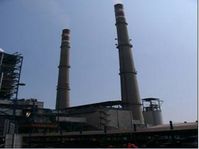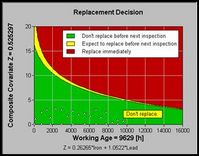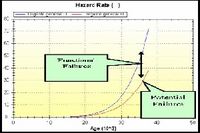omdec.com
http://www.omdec.com/moxie/About/cases/rewop-sap-interface-impro.shtmlSAP - LRCM (Living RCM) interface improves reliability at Coal Fired Power Generation company
In the search for improved Physical Asset Management performance, a major Canadian-based Power Generation company sought to exploit the benefits of good reliability and maintenance information practices. Specifically they wished to increase the value derived from the investment made in their SAP PM system.
In the search for improved Physical Asset Management performance, a major Canadian-based Power Generation company sought to exploit the benefits of good reliability and maintenance information practices. Specifically they wished to increase the value derived from the investment made in their SAP PM system.
Coal Fired Power Generation company improves reliability with SAP – LRCM interface:
Summary:
In the search for improved Physical Asset Management performance, a major Canadian-based Power Generation company sought to exploit the benefits of good reliability and maintenance information practices. Specifically they wished to increase the value derived from the investment made in their SAP PM system.
By interfacing LRCM (Living Reliability Centred Maintenance) with their SAP work order module, maintenance engineers and technicians can now accurately and easily analyze historical data. This, plus the adoption of a common language for potential and functional failures, is leading to greatly improved maintenance, inspection and decision-making techniques. In turn this is resulting in increased reliability, fewer failures and reduced maintenance costs.
BACKGROUND AND OBJECTIVES:
A major Canadian-based Power Generation company had implemented the SAP PM Computerized Maintenance Management System (CMMS). Their focus was to use improved reliability and better maintenance information practices to enhance the value derived from their investment in SAP PM. The key project goals were:
1. to help improve maintenance strategies within the maintenance department at a large (6x400MW) coal fired plant.
2. to bridge the gap between their SAP PM software and the data required for high quality reliability analysis using tools such as Weibull, Pareto, Jack-knife, EXAKT and others.
3. to propose a knowledge model that will empower maintenance personnel
4. to exploit to its fullest, information derived from experience so as to reduce costs and increase reliability.
The project originated in the frustration experienced by Technicians and Engineers at the lack of a fundamental and consistent maintenance information model within the work order process. Consequently they were never certain of the information to be included when closing a work order; they were not sure what use, if any, would be made of the observations and comments they provided; and finally, they lacked a consistent way to express their thoughts within the structure and form of the CMMS work order.
METHODOLOGY:
The first step was to examine the SAP database to determine whether the data required for high quality reliability analysis was available, and to then extract that essential data which contributes to the building of a Reliability Knowledge Base. The data was then reviewed for consistency, adequacy and completeness. Corrections and adjustments were made to compensate for the lacking data, and revised procedures were recommended to ensure that the right data was collected in the right format at the right time. The final step was to apply the results to EXAKT in order to predict failure probabilities within a specified time frame.
For the data extraction process, the software product LRCM (Living Reliability Centred Maintenance) was interfaced with the SAP work order module. This was a straight-forward process, but to accommodate the missing data in SAP, a couple of simple additional fields were added. The purpose of these fields is to facilitate cross reference to the RCM database, and collect significant data related to potential failures, functional failures and suspensions.
The linking of LRCM to SAP allowed the PowerGen to perform several key functions, such as to:
- provide a hot link between CMMS and RCM so that the RCM Failure Mode data can be inserted into the work order.
- ensure that RCM records can be updated using the actual experience from the maintenance action – or in the absence of an RCM record, LRCM can create one.
- prepare a Reliability Knowledge Base for use by the analysis tools.
- provide an automatic test of its own accuracy and responsiveness by comparing actual results to predicted results.
EXAKT is a statistical tool which establishes the correlation between the condition variables, the working age of the unit and the cost-risk profile in order to show the risk and probability of failure before the next scheduled outage. Using proportional hazards modelling and analyses of actual events, EXAKT provides comfort to the executive that the risk and the failure probability before the end of the production run is within acceptable corporate limits. Or not.
RESULTS:
The initial results of the data analysis confirmed that the PowerGen was typical of many companies around the world:
1. Source data was incomplete, missing and inconsistent; and thus not easily analyzed.
2. No standard procedures and guidelines existed for collecting the as-found condition of assets in a format appropriate for subsequent reliability analysis.
3. Key data was embedded in text and company specific terminology was widely used; therefore data mining techniques based on word associations was used.
4. No maintenance information model existed on which to build an analyzable database – and therefore….
5. No meaningful reliability analysis was able to be performed
Because of these gaps in the information practices, analytical tools could not be reliably used. It was therefore difficult – if not impossible - for the maintenance department to perform rigorous analyses in order to arrive at conclusive maintenance decisions.
Applying the LRCM methodology, the maintenance department quickly recognized a better way of organizing their work orders for useful historical data retention and analysis. The advantages of separate work orders for each significant unique item-function-failure-cause combination became clearly apparent and formed a solid basis for their reliability-centered knowledge database.
Next, PowerGen was able to perform reliability analyses, and established the clear relationship between a component’s working age, its condition and its failure probability. This enabled them to turn their static historical work orders into a rich source of data for maintenance and reliability improvement. Applying LRCM principles, the PowerGen team now analyzes their maintenance data to produce usable intelligence regarding the effectiveness of current maintenance practices and policies.
As a further benefit, PowerGen sees that these procedures reduce the clerical workload and at the same time, will lead to improved asset performance as a result of good reliability analysis.
In examining the degree of change that will be required for these improvements, PowerGen quickly saw that the only significant requirement for the use of LRCM is that maintenance personnel (including technicians, planners, engineers, and supervisors) use standard RCM terminology to record their field observations on the work order form. Resulting from with this, was the huge added value that at last everyone was talking the same language.
REWOP Failures Graph
NEXT STEPS:
Based on the conclusions from this important work, PowerGen are now evaluating their learnings in order to build an action plan for broader maintenance improvement. These key actions are:
1. To introduce simple and effective documentation standards and procedures that will promote good, complete data on the work order.
2. To fully implement the LRCM system and its methodology.
3. To introduce RCM language in day-to-day work order documentation.
4. To ensure quality of growing reliability knowledge base.
5. To adopt the use of reliability analysis tools on a broader basis.
6. To carefully measure the results from the reliability analysis.
OMDEC gratefully acknowledges the work of Hung Hong and Winston Ip from the University of Toronto’s Department of Mechanical and Industrial Engineering.



